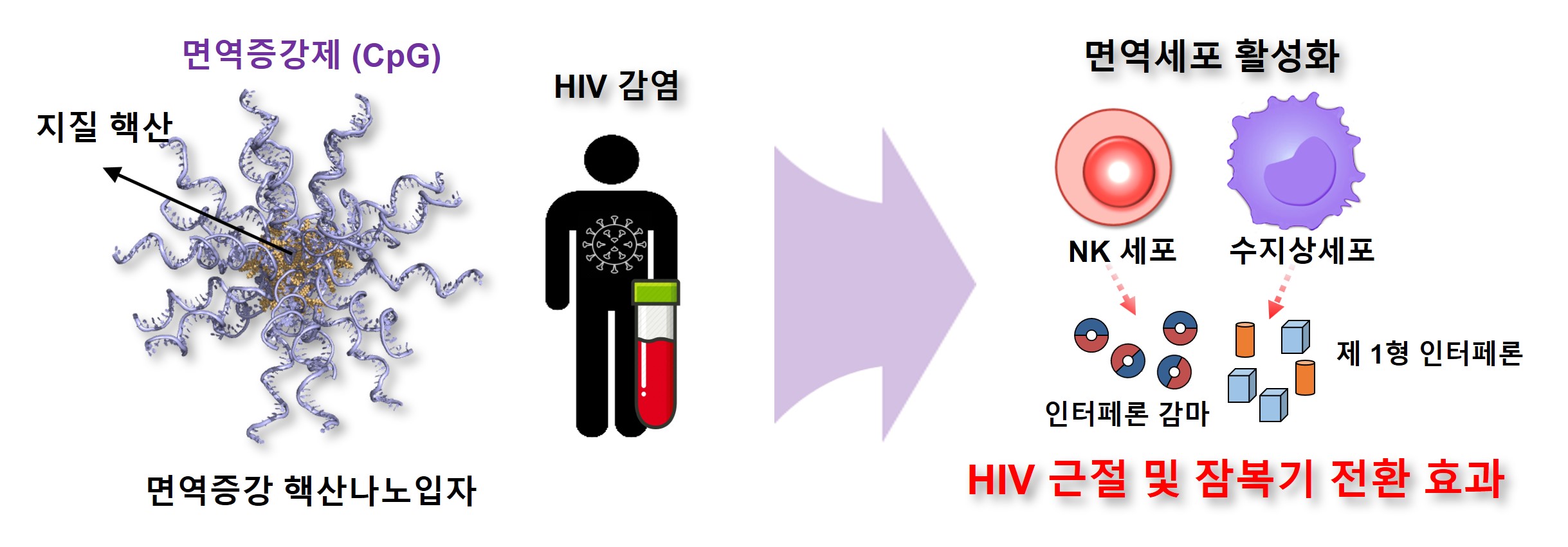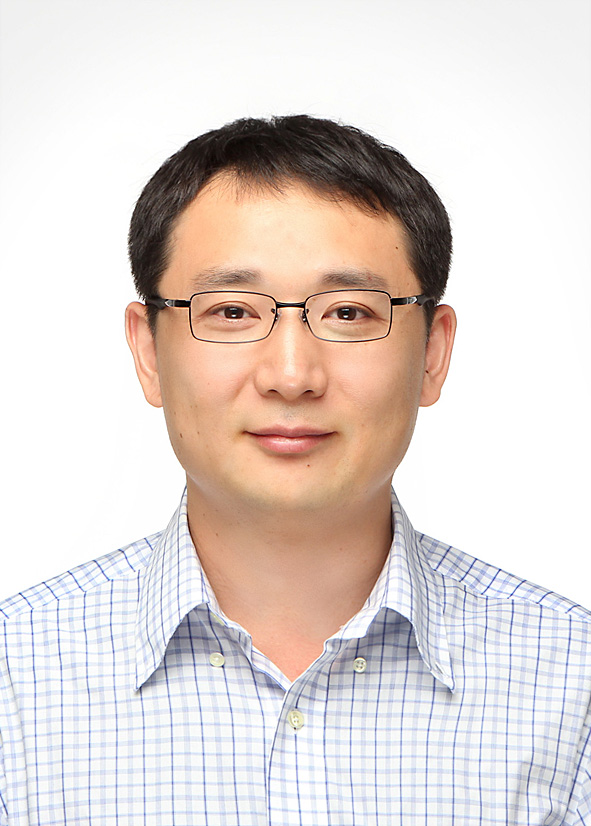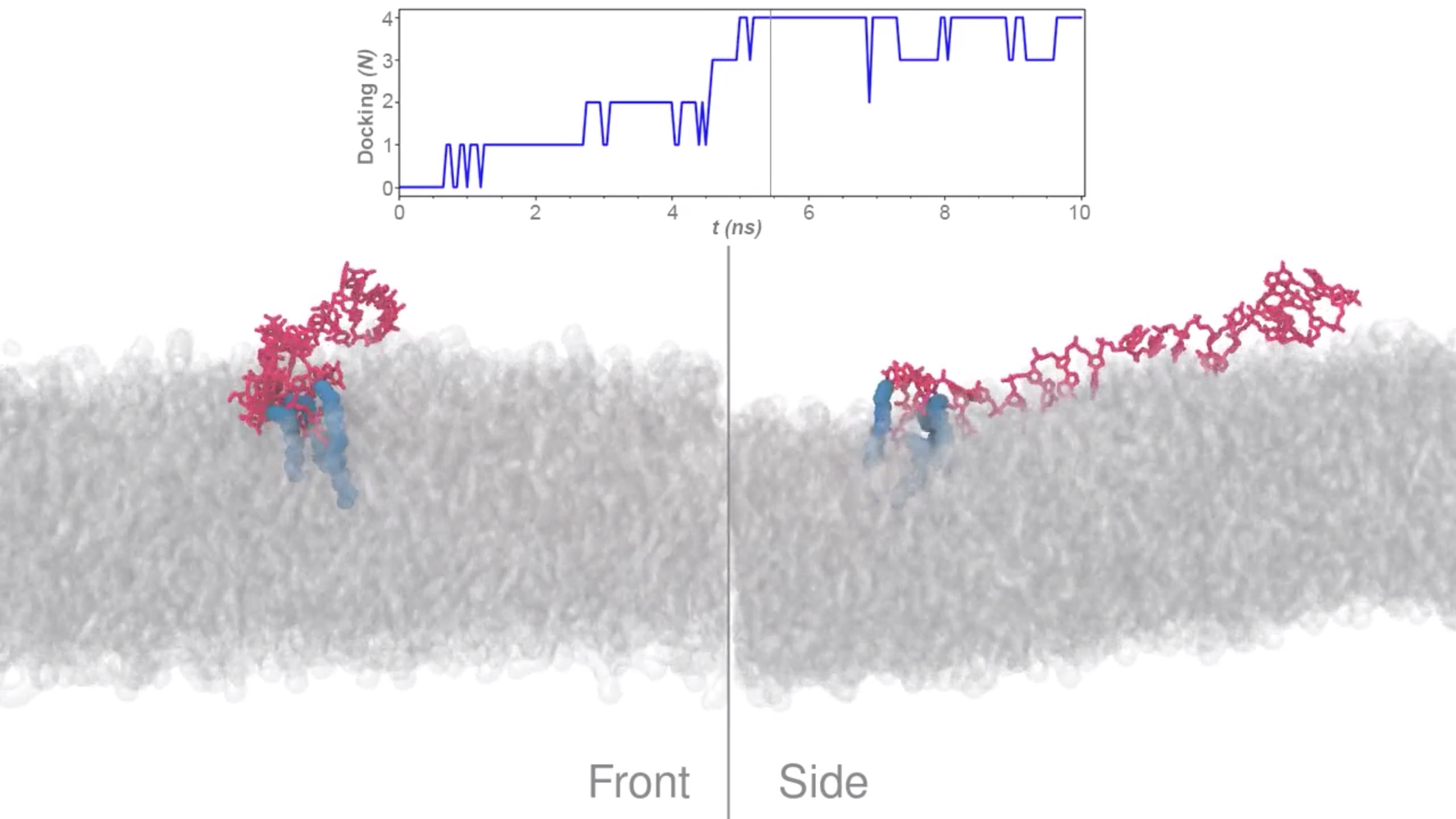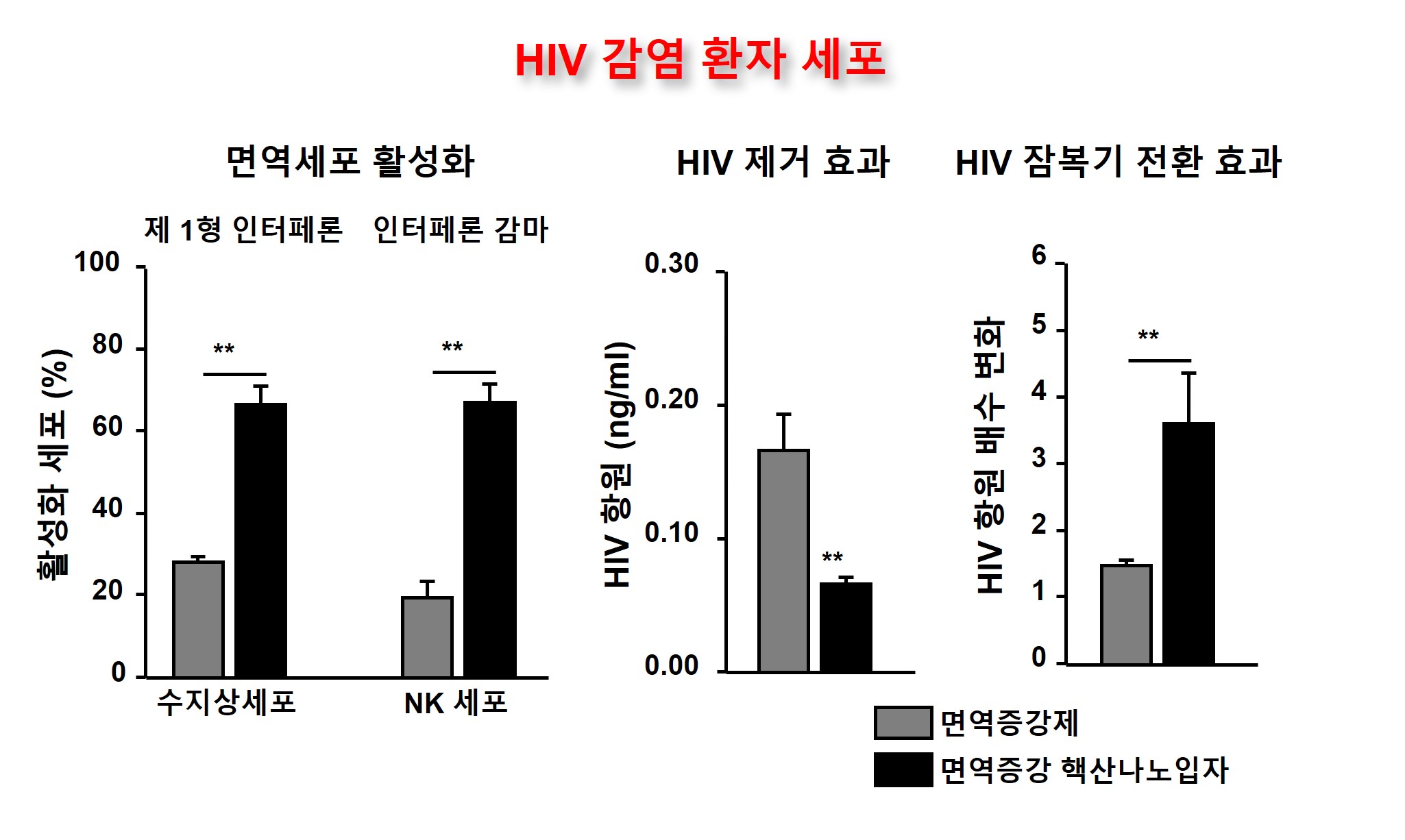Touching Tomorrow atPukyong National University
NEW BEGINNING, NEW INSPIRATION
Pukyong Today List
| A notable achievement for a development of HIV treatment | |||
| WRITER | 대외협력과 | WRITE DAY | 2021-10-07 |
| COUNT | 125 | ||
| A notable achievement for a development of HIV treatment | |||||
 |
대외협력과 |  |
2021-10-07 |  |
125 |
HIV treatment, found a way to eliminate the virus beyond suppressing
- The results of the team of PKNU Prof. Kwak Min-Seok & Yeungnam University Prof. Jin Jun-O … can also be used for coronavirus

△ A schematic diagram of the strategy of HIV anti-immune activity of nucleic acid nanoparticles of enhanced immunity
For the treatment of human immunodeficiency virus (HIV), research results showing that the virus can be removed beyond the existing treatment that suppresses the virus is drawing attention from the public.

The National Research Foundation of Korea (NRF) announced that a research team led by Professor Kwak Min-Seok (Department of Chemistry) of Pukyong National University and Professor Jin Jun-O (Department of Medical Biotechnology) of Yeungnam University has developed nucleic acid nanoparticles that induce immune activity.
The core of the research is to activate the immune cells and remove the infected cells by making synthetic nucleic acid molecules that the immune cells of HIV-infected patients will recognize as antigen.
When infected with HIV, the immune system gets damaged, making it vulnerable to pathogen entry, so it is most important to remove the virus and restore the damaged immune system. However, current antiviral therapy has limitations in suppressing the virus and restoring and maintaining immune function.
The research team planned and synthesized immune-enhancing nucleic acid nanoparticles with a diameter of about 14 nm (nanometer, one billionth of a meter) based on the principle of aggregation of lipid DNA molecules with immune-enhancing sequences bound to lipid nucleic acid groups that can be self-assembled in a spherical shape.
These nucleic acid nanoparticles can effectively pass through the cell membrane of the lipid bilayer structure by adding an artificial lipid structure to the nucleic acid having the CpG sequence that stimulates immune cells. In addition, since it has self-assembly properties, it does not require a drug carrier and is characterized by uniformly made small nanostructures in which various lipid nucleic acids are aggregated in a spherical shape.
The research team proved the immune cell activation ability and antiviral effect of these nucleic acid nanoparticles through experiments using the blood of HIV-infected patients. As a result, it was shown that the nucleic acid nanoparticles induce the activity of white blood cells in the patient's blood, stimulate the specialized dendritic cells to fight the virus, and secrete a large amount of cytokine protein that can fight the virus.
Professor Kwak Min-Seok of Pukyong National University said, "As the nucleic acid nanoparticles developed this time have been confirmed to induce various immune activities for virus treatment, we expect that it can be used as effective treatment for not only HIV but also coronavirus."
The research was conducted with support from the mid-level research support project promoted by the Ministry of Science and ICT and the National Research Foundation of Korea, and was published (online) on August 27th in <Biomaterials>, which is an international academic journal of biomaterials. <Pukyong Today>

△ A study of molecular kinetics of cell membrane interaction of lipid-DNA immunoactive molecules.

△ Effect of nucleic acid nanoparticles on immune cell activation and eradication of HIV-1 and latency reversal of HIV-1